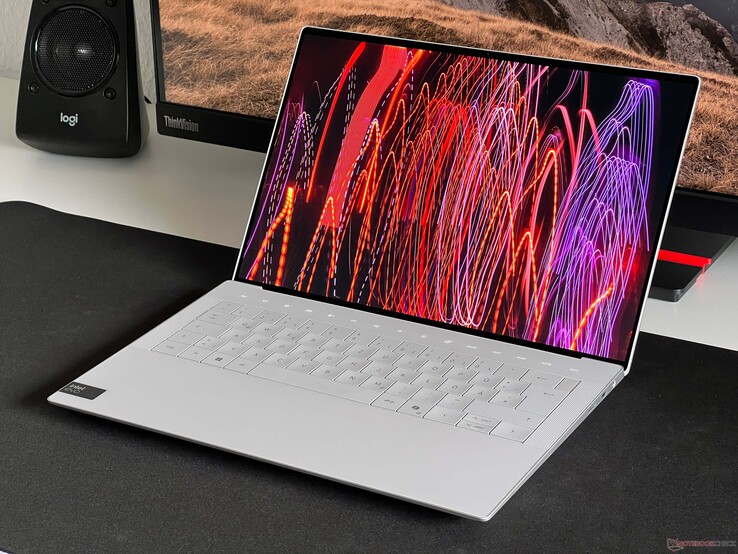For years, the Dell XPS line has been a dominant force in the premium Windows laptop market, often hailed as the “MacBook Pro killer.” Its sleek design, stunning InfinityEdge display, and powerful internals make it a top choice for professionals and creatives. However, for a significant and growing community of developers, system administrators, and DevOps engineers, the crucial question is: How does it perform as a daily driver for Linux? This review dives deep into the Dell XPS experience from a Linux user’s perspective, evaluating its compatibility, performance, and overall suitability for serious technical work.
We’ll explore everything from the out-of-the-box experience with Dell’s own “Developer Edition” running Ubuntu to the process of installing other popular Linux Distributions like Fedora and Arch Linux. This isn’t just about whether Linux *can* run; it’s about how well it runs. Can the hardware handle demanding tasks like code compilation, running multiple containers with Linux Docker, or managing a local Kubernetes Linux cluster? Is it a reliable platform for System Administration, Bash Scripting, and connecting to a Linux Server via Linux SSH? Let’s find out if the Dell XPS is truly the ultimate powerhouse for the modern Linux professional.
Design, Hardware, and First Impressions
Before diving into the software, it’s essential to appreciate the hardware foundation. The Dell XPS series has consistently set a high bar for laptop craftsmanship, and the latest models are no exception. This physical excellence is a critical part of the user experience, especially for those who spend hours a day interacting with their machine.
Premium Build and Aesthestics
The XPS chassis is precision-milled from a single block of aluminum, giving it a rigid, durable feel with zero flex. The platinum silver exterior is complemented by a black carbon fiber composite palm rest, which not only looks sophisticated but also remains cool to the touch during use. The attention to detail is evident in the diamond-cut sidewalls and the finely tuned hinge, which allows for one-handed opening. At just over 4 lbs (for the 15-inch model) and remarkably thin, it strikes an excellent balance between portability and a substantial, premium feel.
The Stunning InfinityEdge Display
Perhaps the most iconic feature of the XPS is its four-sided InfinityEdge display. The razor-thin bezels create an immersive, nearly borderless viewing experience. Dell offers several panel options, including a standard FHD+ (1920×1200) IPS display and a breathtaking 3.5K (3456×2160) OLED touch panel. For developers and anyone working in a Linux Terminal, the high resolution and crisp text rendering are a dream. The 16:10 aspect ratio provides more vertical screen real estate, which is incredibly useful for viewing code, logs, or long documents without excessive scrolling. The OLED panel, with its perfect blacks and vibrant, color-accurate display (100% DCI-P3), is also a fantastic choice for content creation or simply enjoying media after a long day of Linux Administration.
Keyboard and Trackpad
The typing experience is crucial for productivity. The XPS keyboard features large, backlit keycaps with 1.3mm of travel. The keys are stable and provide satisfying tactile feedback, making it comfortable for long coding sessions or writing extensive documentation. The layout is standard and easy to adapt to. Below it sits a massive glass precision trackpad. It’s smooth, responsive, and handles multi-touch gestures in Linux desktop environments like GNOME and KDE flawlessly, providing a user experience that rivals the best in the industry.
Linux Compatibility: The Developer Edition and Beyond
This is where the Dell XPS truly shines for the Linux community. Unlike many manufacturers where Linux support is an afterthought, Dell actively embraces it through its Project Sputnik initiative, culminating in the “Developer Edition” models that come with Ubuntu pre-installed.
The Official Ubuntu Experience
Opting for a Developer Edition XPS is the most seamless way to get started. These machines are certified to work with Ubuntu out of the box. This means all hardware components—from the Killer Wi-Fi card and Bluetooth to the fingerprint reader and special function keys—have been tested and are supported with the correct drivers. This eliminates the guesswork and troubleshooting that often accompanies installing Linux on new hardware. This official support is a game-changer, making it a reliable choice for corporate environments that require a stable, certified Ubuntu Tutorial-friendly platform.
Installing Other Linux Distributions
What if you prefer Fedora Linux, Arch Linux, or another distribution? The news is still overwhelmingly positive. Because Dell uses mainstream components and contributes to the Linux Kernel, most modern distributions install with minimal fuss.
- Secure Boot: Most major distros like Ubuntu and Fedora support Secure Boot, so you can often install them without needing to disable it in the BIOS.
- NVIDIA Drivers: For models with a dedicated NVIDIA GPU, installing the proprietary drivers is key to unlocking full performance. On Ubuntu, this is as simple as using the “Additional Drivers” tool. On Fedora, it involves adding the RPM Fusion repository. Arch Linux users can install them directly from the official repositories. Getting this right is critical for tasks ranging from machine learning with Python Linux libraries to light gaming.
- Wi-Fi and Bluetooth: Modern kernels have excellent support for the Intel Killer Wi-Fi cards used in the XPS. In the rare case of an issue, a kernel update usually resolves it.
- Fingerprint Reader: Support for fingerprint readers on Linux has improved dramatically. Tools like
fprintdallow you to enroll your fingerprints for login andsudoauthentication, adding a layer of convenience and Linux Security.
A common first step after installation is to run a system update. For a Debian Linux or Ubuntu-based system, this would be:
sudo apt update && sudo apt upgrade -yThis simple set of Linux Commands ensures you have the latest kernel and drivers, which often includes upstream improvements for XPS hardware.
Performance for the Power User
With its high-end Intel Core i7/i9 processors, up to 64GB of fast DDR5 RAM, and speedy NVMe SSDs, the Dell XPS is a performance beast. But how does this translate to real-world workflows for a Linux professional?
Development, DevOps, and Containerization
The XPS is an exceptional machine for software development. Compiling large C/C++ projects with GCC is incredibly fast, significantly reducing wait times. For a Linux DevOps workflow, the multi-core CPU is a massive asset.
- Container Management: You can comfortably run dozens of containers using Linux Docker without the system breaking a sweat. This is perfect for spinning up a full development stack, including a PostgreSQL Linux database, a Redis cache, and an Nginx web server. This makes it an ideal platform for following any Docker Tutorial.
- Virtualization: The ample RAM and powerful CPU make it a great host for virtualization with KVM/QEMU. A system administrator can run multiple virtual machines to test different environments, such as a Red Hat Linux server for testing an Ansible playbook or a minimal CentOS instance for troubleshooting.
- Automation and Scripting: Whether you’re writing complex Python Scripting for Python Automation or deploying infrastructure with Ansible, the machine’s responsiveness ensures a smooth, lag-free experience. The powerful hardware means that scripts which perform heavy I/O or CPU-bound tasks execute rapidly.
System Monitoring and Thermal Performance
Under heavy, sustained load—like compiling the Linux Kernel or running a complex simulation—the XPS can get warm. Dell’s thermal management is good, but the slim chassis has its limits. In Linux, you can use tools like htop or the classic top command for System Monitoring to keep an eye on CPU temperatures and clock speeds. For better thermal and power management, installing and configuring TLP is highly recommended.
sudo apt install tlp tlp-rdwThis utility optimizes power settings automatically, improving battery life and helping to manage thermals without requiring manual intervention. This kind of Performance Monitoring and tuning is a key aspect of effective Linux Administration on a laptop.
Final Verdict: The Linux Professional’s Choice?
After extensive use, it’s clear that the Dell XPS line is more than just a capable Linux laptop; it’s arguably one of the best high-end options available today. The combination of official support from Dell, superb build quality, a best-in-class display, and top-tier performance makes it an incredibly compelling package.







